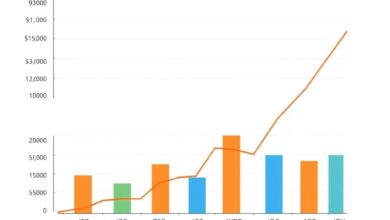How to compare investment platforms before choosing one

Prioritize security above all when selecting your next trading avenue. A reputable service should provide robust measures, including two-factor authentication and encryption protocols. These features safeguard your assets against potential cyber threats.
Next, examine the fee structure closely. Transparent pricing allows for better financial planning and understanding of your investment landscape. Hidden charges can erode profits, making it crucial to choose a provider that clearly outlines its costs.
Usability remains a key factor in ensuring an enjoyable trading experience. Intuitive interfaces enhance user interaction and streamline transactions. Opt for solutions that offer mobile access, allowing you to manage your portfolio on the go without complication.
Finally, assess the reputation of the service. Seek out reviews from credible sources and feedback from other users to gauge reliability and performance. A well-regarded platform not only assures peace of mind but also reflects commitment to customer satisfaction.
Assessing Fee Structures
Evaluate the fee frameworks of various services to identify those that align with your investment strategy. High fees can significantly erode returns over time, so prioritize platforms with transparent pricing.
Start by examining trading commissions. Some brokers offer commission-free trades, while others may charge per transaction. Consider how often you plan to trade; frequent traders might benefit from flat-rate structures.
Account maintenance fees also warrant attention. Look for options without monthly or annual fees, especially if you’re starting with a smaller capital base. These charges can add up and impact your net gains.
Management fees for mutual funds and ETFs are another critical factor. Aim for funds with lower expense ratios, as these typically indicate less drag on performance.
The reputation of the service provider plays a role in assessing potential hidden costs. Research user reviews and regulatory history to ensure the platform maintains integrity and security in its operations.
Finally, leverage analytical tools offered by these platforms to track expenses over time. The best tools allow you to simulate different fee scenarios, helping you make informed decisions about where to allocate resources for maximum efficiency.
Evaluating User Experience
Prioritize platforms that provide top-tier security features alongside a seamless user interface. Look for two-factor authentication, encryption protocols, and regular security audits to protect your investments.
- Usability: Choose interfaces that are intuitive and easy to navigate. A clutter-free design enhances decision-making speed.
- Tools: Evaluate the availability of analytical tools and resources. Platforms offering robust charting features, real-time data feeds, and educational materials empower users with necessary insights.
- Reputation: Research user reviews and ratings on independent sites. Established platforms often have a track record of reliability, which can mitigate risks associated with lesser-known services.
Test platforms through demo accounts to gauge their responsiveness and functionality before committing funds. Your experience should feel fluid, not cumbersome.
- Assess the onboarding process; it should facilitate quick access without overwhelming new users.
- Check for customizable dashboards that allow you to tailor your view according to personal preferences.
A user-friendly environment contributes significantly to overall satisfaction; ensure yours aligns with your trading style and needs.
Analyzing Investment Options
Prioritize platforms with a strong reputation for reliability and transparency. Research user reviews and ratings to gauge trustworthiness, as the credibility of a service can significantly impact your financial outcomes.
Assess the usability of each option. Look for intuitive interfaces that simplify transactions and account management. A streamlined experience reduces errors and enhances overall satisfaction, making it easier to focus on strategic decisions rather than technical difficulties.
Security measures are non-negotiable. Ensure that the chosen service utilizes robust encryption protocols, two-factor authentication, and regular security audits. Platforms with a history of breaches should be approached with caution, regardless of their other features.
Evaluate the tools offered for analysis and portfolio management. Comprehensive charting capabilities, real-time data access, and analytical resources are invaluable for informed decision-making. The right tools can empower you to identify trends and optimize your investment strategies effectively.
Lastly, factor in customer support availability. Accessible assistance can resolve issues promptly and enhance your overall experience, especially during critical market movements when timely guidance is paramount.
Understanding Security Features
Always prioritize platforms that offer robust security measures such as two-factor authentication (2FA) and encryption protocols. These features significantly reduce the risk of unauthorized access to your account, safeguarding your assets.
Examine the platform’s reputation regarding security breaches. Research historical incidents and how promptly they addressed any vulnerabilities. A transparent approach indicates a commitment to protecting user information.
Look for tools that monitor suspicious activity in real-time, providing alerts about unusual transactions. This proactive approach enhances overall safety and gives users peace of mind.
Understand the fees associated with security features. Some services may charge additional costs for enhanced protection, but the investment is often justified by the increased safety it provides.
A comprehensive insurance policy against cyber threats can further bolster your confidence in a platform’s reliability. Ensure that any potential losses due to security failures are covered adequately.
Stay informed about ongoing updates and improvements in security technologies implemented by the service provider. Continuous enhancement reflects their dedication to maintaining high standards of protection for client funds and data.
Reviewing Customer Support Quality
Prioritize platforms that offer 24/7 customer service to ensure assistance is always available, especially during market fluctuations. Evaluate the responsiveness of support channels–live chat, email, and phone should all be efficient. A good benchmark is a response time under 10 minutes for live inquiries.
Reputation plays a significant role in assessing support quality. Research user reviews on independent forums and social media to gauge real experiences. Look for consistent feedback regarding helpfulness and problem resolution.
Consider the availability of educational resources provided by the support team. Platforms that offer tutorials or webinars through their support channels enhance usability, empowering users to make informed decisions without needing constant assistance.
A platform’s commitment to security also reflects its approach to customer support; transparent policies and quick responses to security concerns indicate a responsible provider. Always verify if there are dedicated teams handling security-related inquiries.
Select services that encourage user feedback on support interactions, as this can lead to continuous improvements in service quality, ultimately fostering trust in the platform.







